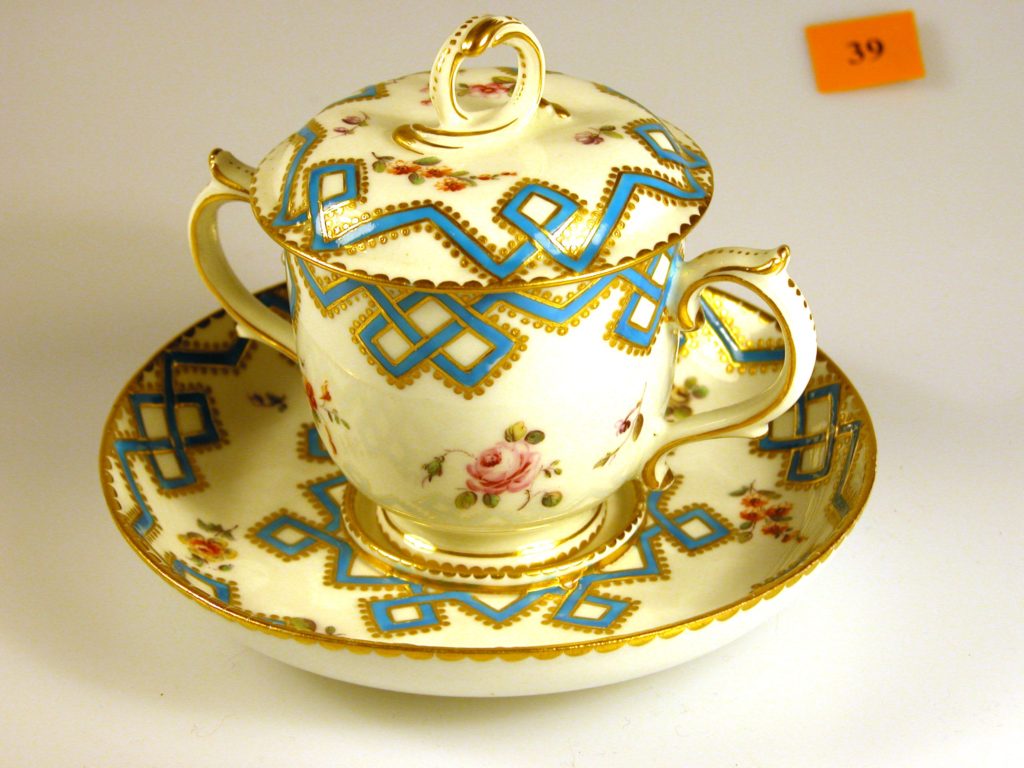
Cup, saucer and cover with turquoise riband
18th century, Derby
Bequeathed by John Irving, 1915
Reference: 5283
Can be found: EarthMaterials and Masters
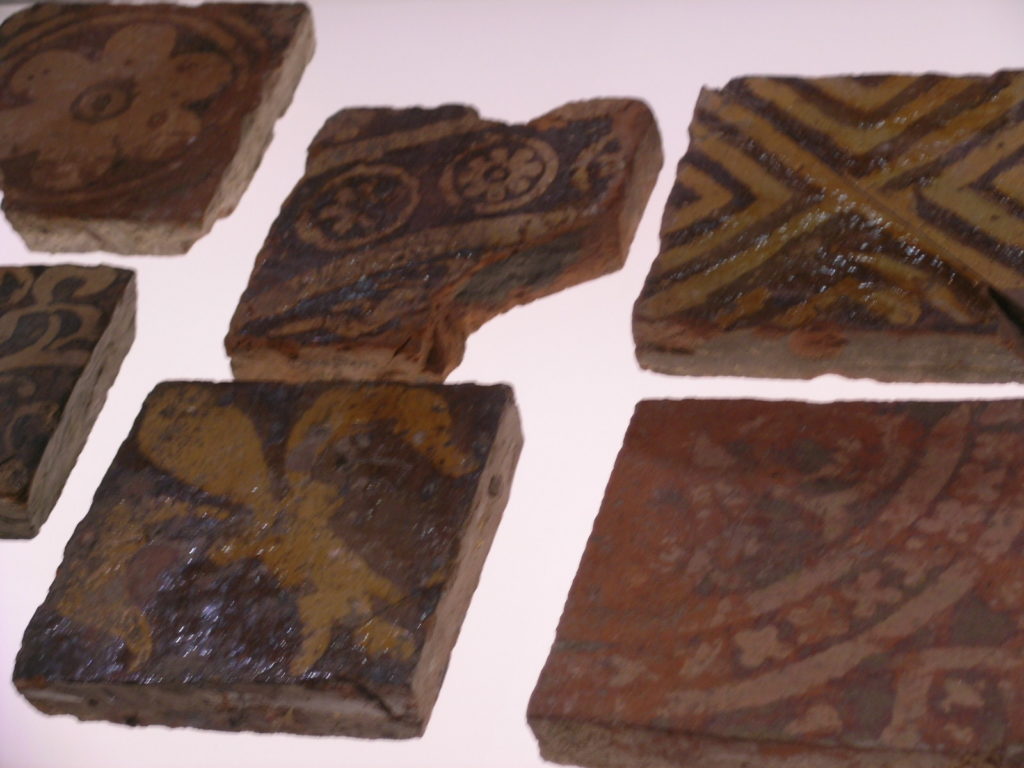
Decorated tiles made at Tyler Hill, Canterbury
Medieval
Glazed earthenware
Tiles like these were made by pressing clay into a mould and filling the pattern indented in the clay with slip (slightly diluted clay) of another colour, before glazing and firing. They were expensive and used in cathedrals, abbeys, churches and royal palaces. Many depict flowers or mythical beasts such as dragons. They can be joined in various ways for extended and repeat patterns.
Reference: 8743 and (nn)
Can be found: EarthMaterials and Masters
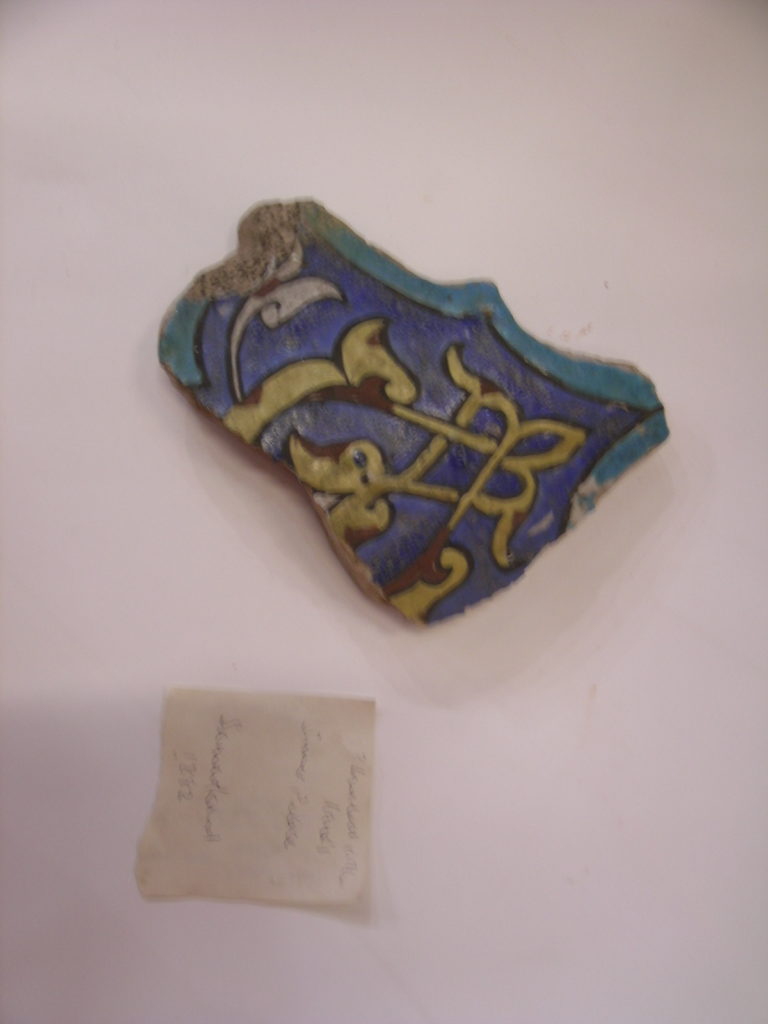
Fragment of an Iznik tile
From the Summer Palace at Samarkand
Probably collected by the Reverend Henry Lansdell, 1882, and presented by Mary Lansdell in memory of her husband, 1922
Reference: CANCM:nn
Can be found: EarthMaterials and Masters
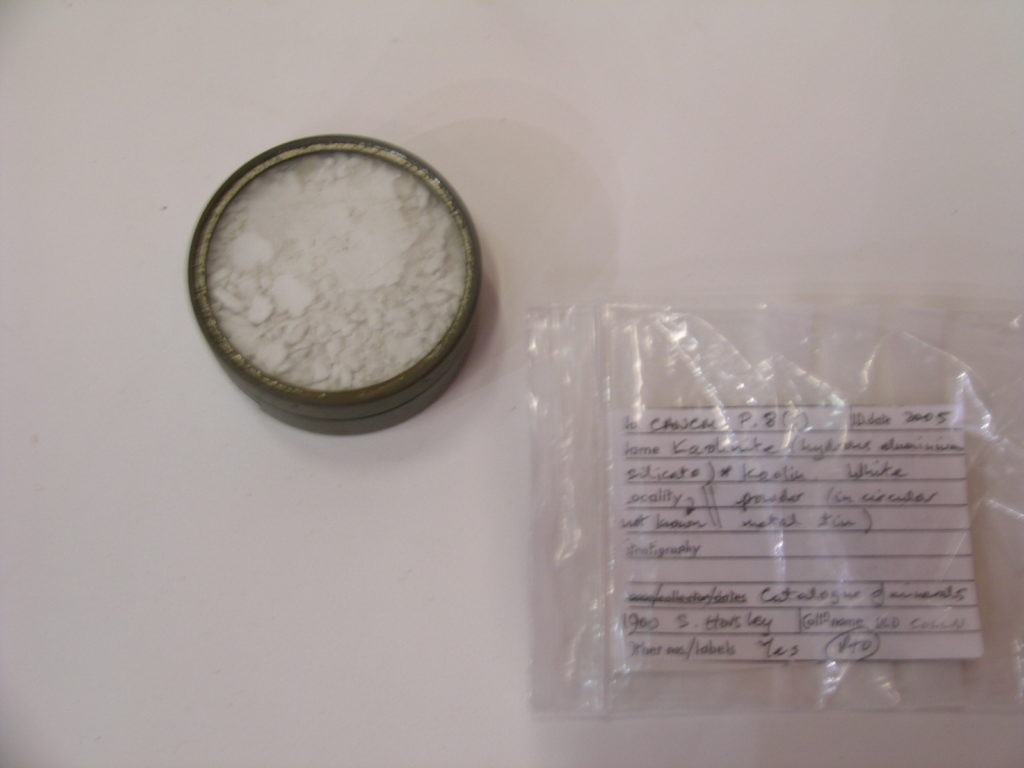
Kaolin powder
Presented by S. Horsley, 1900
Reference: P.8
Can be found: EarthMaterials and Masters
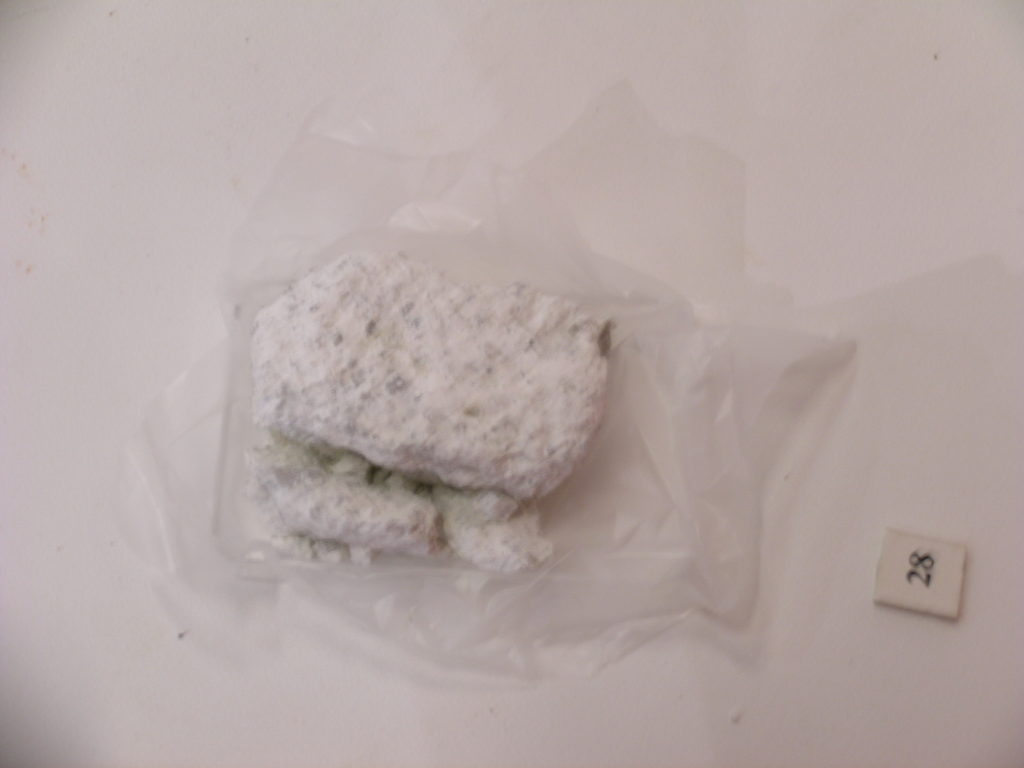
Kaolinite
Reference: P.7
Can be found: EarthMaterials and Masters
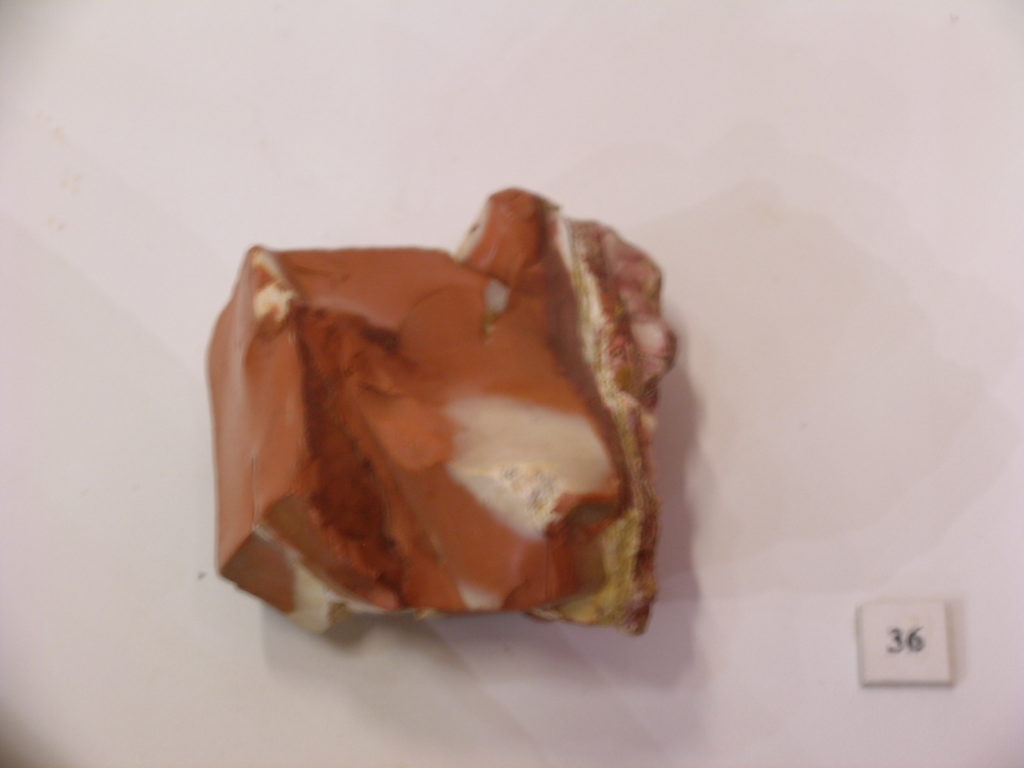
Kaolinite from Cornwall
Hydrous aluminium silicate, the ‘magic’ ingredient that gives strength and translucency to pottery when added to clay, creating porcelain.
Reference: K1320
Can be found: EarthMaterials and Masters
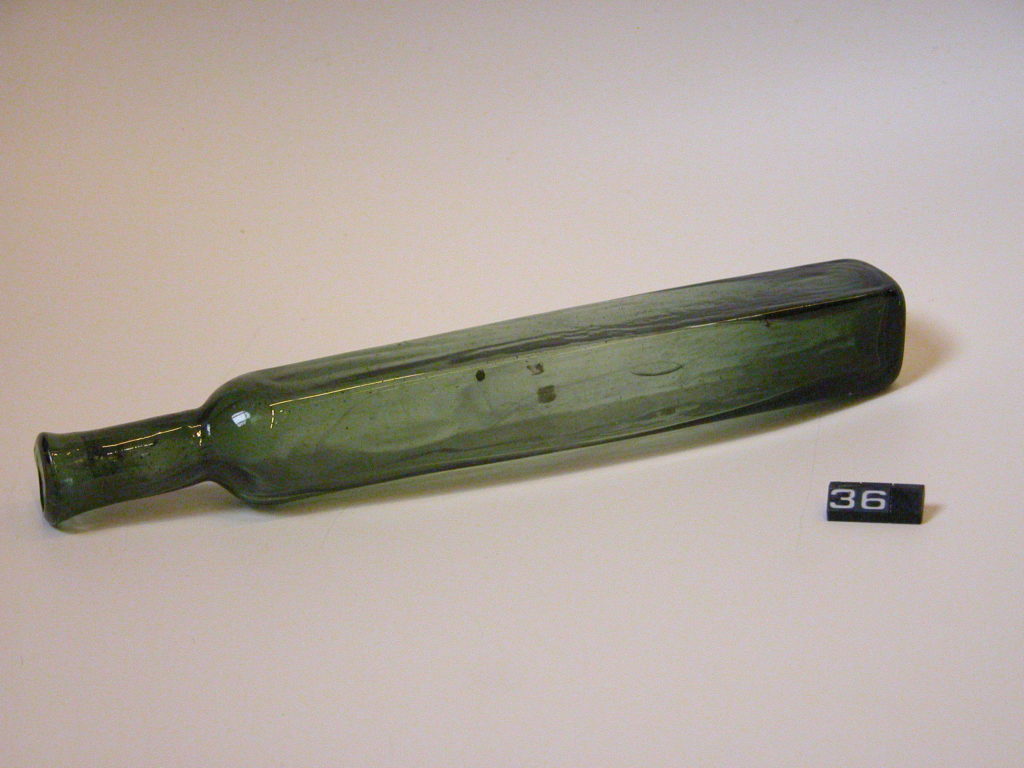
Long dark green glass bottle
Presented by Mr E W H Court, 1928
Reference: 6663
Can be found: EarthMaterials and Masters
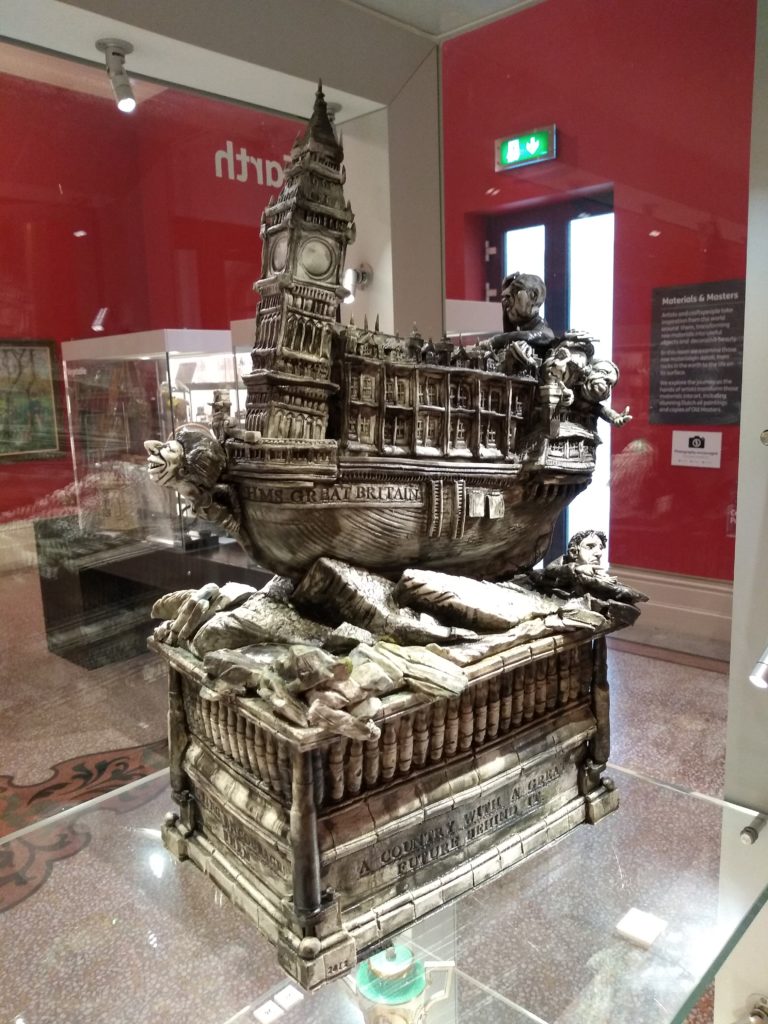
Ship of Fools
2012, Clive Soord
Porcelain
Clive Soord is a sculptor in ceramics, and a ceramics tutor at Canterbury College. He can be seen within his studio in the photograph by Neil Sloman displayed in the Materials and Masters room.
“Ship of Fools is a work inspired by the old saying ‘too many steersmen sink the ship’. It’s a satirical political work. The tall ship is indicative of the ships we had when we had an empire. Westminster represents our seat of government on the poop deck, and we have a gaggle of politicians all waving their white papers pointing in different directions. The figurehead on HMS Britain is Thatcher, running the ship aground on the Grand Banks RBS, Lloyds etc.”
Lent by the artist
Reference: CANCM:nn
Can be found: EarthMaterials and Masters
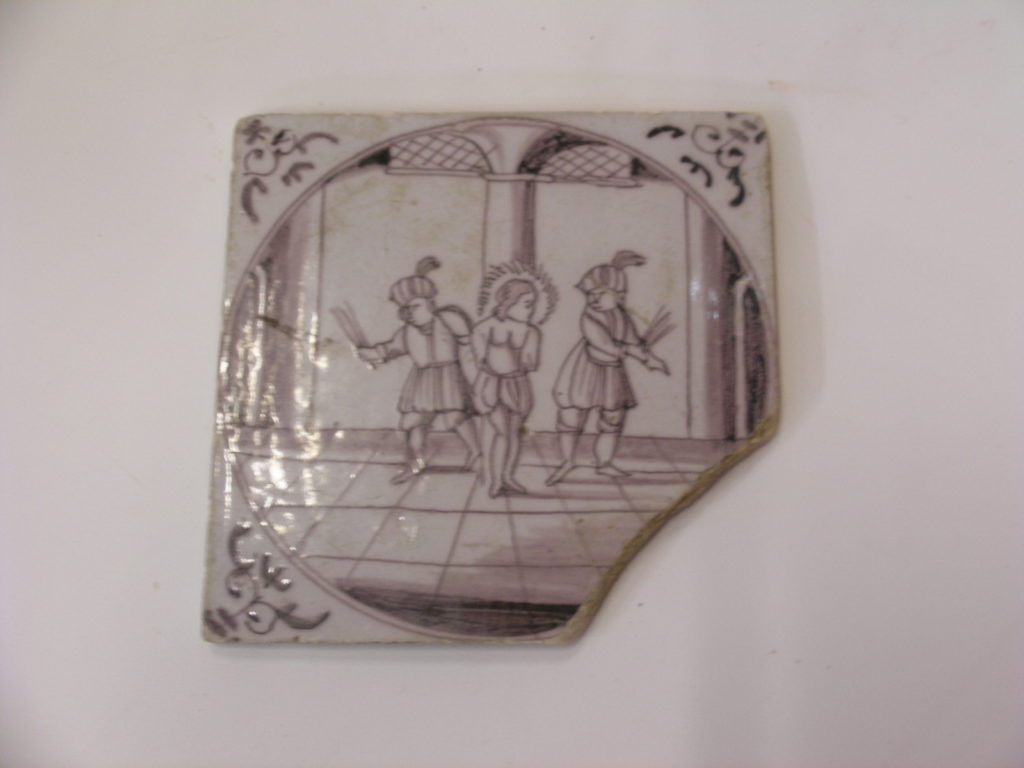
Tiles
16th – 17th century, Delft, Netherlands
Tin-glazed earthenware
Tiles like these more usually had blue on white decoration. They were used for tiling fireplaces.
Presented by Miss Haddaway
Reference: 7773
Can be found: EarthMaterials and Masters
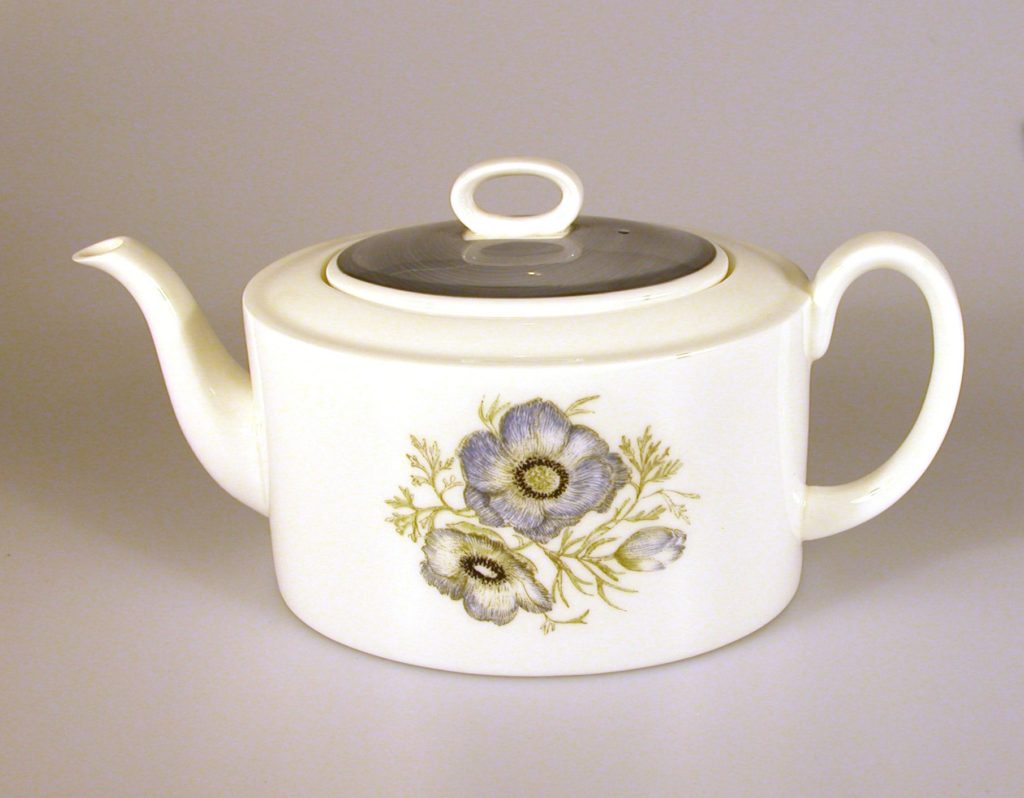
‘Glen Mist’ teapot
1970s, Wedgwood
Designed by Susie Cooper
Bone china
Reference: 2002.320.1-2
Can be found: EarthMaterials and Masters
